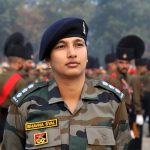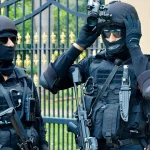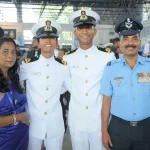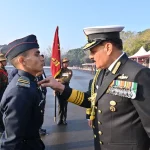The PARA Special Forces (Para SF) of the Indian Army epitomize the pinnacle of military capability and strategic expertise. From handling urban hostage situations to spearheading counter-insurgency missions in treacherous mountain terrains, these elite units showcase a versatility that is essential for modern warfare. Their establishment has a storied history, and their operations have significantly shaped India’s military landscape. As we delve into the intricate tapestry of the PARA SF battalions—their nicknames, roles, and legacy—we will uncover the essence of their contributions to national security.
Historical Context
The origins of the Indian Special Forces trace back to the time of the British Raj when the need for an elite fighting force became abundantly clear. With the army’s transformation post-independence, the role of special forces evolved to counter both internal challenges and external threats. The PARA SF units, given their unique training and operational modes, have sealed their reputation as an indispensable part of the Indian Army.
The establishment of the PARA SF battalions took significant turns through the years, culminating in a rigorous training regime tailored to the demands of contemporary warfare. The first elite unit, 1 Para SF, originally formed in 1761, heralded a legacy of tactical excellence that has grown into what we recognize today across various battalions.
Overview of PARA SF Battalions
The PARA SF battalions are known for their specialized roles tailored to various combat environments. Listed below, a comprehensive overview highlights their nicknames, specific operational roles, and years of establishment:
| Battalion | Role | Nickname | Establishment Year |
|---|---|---|---|
| 1 Para SF | Urban Warfare | Red Devils/Pratham’s | 1761 / 1978 |
| 2 Para SF | Mountain Warfare, Counter Insurgency | Predators | 1797 / 2000 |
| 3 Para SF | Desert Warfare | Russell’s Viper | 1813 / 2002 |
| 4 Para SF | Counter Terrorism, Counter Insurgency | Mighty Daggers/Four of the North | 1961 / 2003 |
| 5 Para SF | Mountain Warfare, Counter Insurgency | Batalik | |
| 6 Para SF | Counter Terrorism, Counter Insurgency | Sakht Para | |
| 7 Para SF | Counter Terrorism, Counter Insurgency | SE7EN | |
| 9 Para SF | Counter Terrorism, Counter Insurgency | Mountain Rats/Ghost Operators/Pirates | 1966 |
| 10 Para SF | Desert Warfare, Counter Insurgency | Desert Scorpions | 1967 |
| 11 Para SF | Jungle Warfare, Counter Insurgency | Vipers | 2011 |
| 12 Para SF | Jungle Warfare, Mountain Warfare, Counter Insurgency / Counter Terrorism | Dirty Dozens | 2011 |
| 13 Para SF | Counter Terrorism, Counter Insurgency | Thunderbolts | |
| 21 Para SF | Jungle Warfare, Mountain Warfare, Counter Insurgency / Counter Terrorism | Waghnaks | 1985 / 1996 |
| 23 Para SF | Jungle Warfare | Devil’s Own | |
| 29 Para SF | Counter Insurgency / Counter Terrorism | Airborne Rajputs |
Key Roles and Operational Environments
Urban Warfare
The 1 Para SF, commonly known as the Red Devils, specializes in urban warfare. Their expertise is vital when dealing with hostage situations, urban combat scenarios, and close-quarters battle. These units are trained extensively to acquire precision in tightly controlled environments where collateral damage must be minimized.
Mountain Warfare
2 Para SF and 5 Para SF are tasked with mountain warfare and counter-insurgency operations. As India’s terrain is rich with mountainous geography, these battalions have undergone rigorous training to handle operations in high-altitude, inhospitable environments, making them pivotal during conflicts along the northern borders.
Desert Warfare
The 3 Para SF and 10 Para SF, also known as the Russell’s Viper and Desert Scorpions respectively, are equipped to handle operations in dry and arid conditions. These battalions excel in tactics that leverage the unique challenges of desert warfare, such as extreme temperatures and visibility issues.
Jungle Warfare
Jungle warfare is a key focus for both 11 Para SF (Vipers) and 23 Para SF (Devil’s Own). With jungles posing unique challenges such as thick foliage and unpredictable terrain, these battalions have honed their skills through exhaustive training that emphasizes stealth, ambush tactics, and environmental adaptability.
Counter Terrorism
Several PARA SF battalions, including 4 Para SF (Mighty Daggers) and 7 Para SF (SE7EN), are specifically trained for counter-terrorism operations. This role demands high levels of situational awareness, intelligence gathering, and tactical execution to neutralize threats rapidly and effectively.
Legacy of PARA SF Battalions
The PARA SF battalions have gained a legendary status due to their daring missions and bravery in the face of adversity. Over the years, these units have taken part in various notable operations that significantly shaped India’s military and civil history.
- Surgical Strikes: The PARA SF units are often credited for their pivotal role in surgical strikes conducted across the Line of Control (LoC) in response to terrorist attacks. Such operations have underscored the tactical efficacy and strategic necessity of these elite forces, amplifying their reputation.
- Operation Black Tornado (2008): During the 26/11 attacks in Mumbai, 1 Para SF was involved in combating terrorists holed up in the Taj Mahal Palace Hotel. Their swift and coordinated action showcased the unit’s proficiency in urban warfare—a hallmark of their operational capability.
- Counter Insurgency Missions: Units like 9 Para SF, also known as Pirates, have been instrumental in various counter-insurgency missions in Kashmir, often operating under extreme conditions to dismantle terror networks.
- Operation All Out: The 6 Para SF conducted significant operations in Jammu and Kashmir, focusing on neutralizing terrorist hideouts and instilling a sense of security among the local population. Their successes in these operations highlight their continuing necessity in India’s fight against terrorism.
Challenges and Solutions
While the PARA SF battalions are highly capable, they face several challenges that must be addressed to maintain their edge.
- Resource Allocation: Adequate funding for training, modernization, and equipment is essential. Establishing dedicated budgets that focus on research and development in combat technology can ensure these units remain at the forefront.
- Coordination with Other Forces: Effective collaboration with intelligence and local military units is indispensable. Regular joint exercises can improve inter-forces camaraderie and operational efficiency.
- Psychological Resilience: The nature of special operations takes a toll on personnel mentally. Establishing robust mental health support systems through counseling can aid soldiers in managing the psychological strain associated with high-stakes missions.
Future Trends and Predictions
As warfare continues to evolve, PARA SF battalions must adapt to new challenges.
- Integration of Technology: The future of special operations will largely depend on the integration of advanced technology, including drones, surveillance systems, and artificial intelligence, which can provide critical advantages in intelligence and real-time decision-making during missions.
- Cyber Warfare: As cyber threats appear to be increasingly prominent, there will likely be a greater emphasis on training related to cyber security and counter-cyber operations role within special forces.
- Partnerships with Global Forces: Collaboration with international special operations forces can lead to knowledge transfer and tactical innovation, helping to strengthen capabilities through shared experiences.
Conclusion
The PARA Special Forces have carved a niche as a formidable entity within the Indian military landscape. Each battalion, with its unique nickname and specific combat role, represents a legacy of valor, resilience, and unparalleled skill. Their contributions extend beyond military engagements, embodying a commitment to national security and a stronger India.
As India continues to navigate complex security challenges, the role of the PARA SF battalions will remain crucial. They are not just trained soldiers; they are guardians of national interest who continuously evolve to meet the demands of modern warfare. Their legacy inspires future generations, ensuring that the spirit of excellence perseveres in the heart of each battalion. To recognize and understand their contributions empowers us to appreciate the intricate mechanisms of our defence and the relentless spirit that fortifies it.
Thus, ongoing support, innovation, and recognition of these elite battalions are essential in bolstering national security and fostering a robust defence mechanism for years to come.













